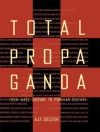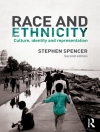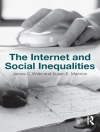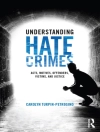Why do individuals exposed to the same environment turn out so differently, with some engaging in crime and others abiding by societal rules and norms? Why are males involved in violent crime more often than females? And why do the precursors of serious pathological behavior typically emerge in childhood? This fascinating text addresses key questions surrounding criminal propensity by discussing studies of the life-course perspective—criminological research that links biological factors associated with criminality with the social and environmental agents thought to cause, facilitate, or otherwise influence a tendency towards criminal activity. The book provides comprehensive, interdisciplinary coverage of the current thinking in the field about criminal behavior over the course of a lifetime. Additionally, it highlights interventions proven effective and illustrates how the life-course perspective has contributed to a greater understanding of the causes of crime.
表中的内容
Chapter 1. Life Course Criminology
Chapter 2. The Stability of Criminal and Analogous Behaviors
Chapter 3. Continuity in Antisocial Potential
Chapter 4. Genetics and Crime
Chapter 5. Introduction to Brain Structure and Basic Functions—Part I: The Hindbrain, Midbrain, and Limbic Structures In the Development of Criminality
Chapter 6. Introduction to Brain Structure and Basic Functions—Part II: Forebrain Formations, Trauma, and Criminal Behavior
Chapter 7. Concepts and Issues in Neuropsychological Functioning
Chapter 8. Sex Differences in Brain Processes and Laterality
Chapter 9. Special Topics in the Life Course: Psychopathy, Early Onset, and Drug Influences on Criminality
Chapter 10. Individuals and Their Social World
Chapter 11. Families and Crime
Chapter 12. Prepubescence: Infancy and Childhood
Chapter 13. Postpubescence: Adolescence and Adulthood
Chapter 14. Policy Recommendations
关于作者
Leah E. Daigle is professor in the Department of Criminal Justice and Criminology in the Andrew Young School of Policy Studies at Georgia State University. She received her Ph D in criminal justice from the University of Cincinnati in 2005. Her most recent research is centered on repeat sexual victimization of college women and responses women use during and after being sexually victimized. Her other research interests include the development and continuation of offending and victimization across the life course. She is author of Victimology: A Text/Reader (2nd ed.), Victimology: The Essentials (2nd ed.), coauthor of Criminals in the Making: Criminality Across the Life Course, Victimology, and Unsafe in the Ivory Tower: The Sexual Victimization of College Women, which was awarded the 2011 Outstanding Book Award by the Academy of Criminal Justice Sciences. She has also published numerous peer-reviewed articles that have appeared in outlets such as Justice Quarterly, Journal of Quantitative Criminology, Journal of Interpersonal Violence, and Victims and Offenders.












